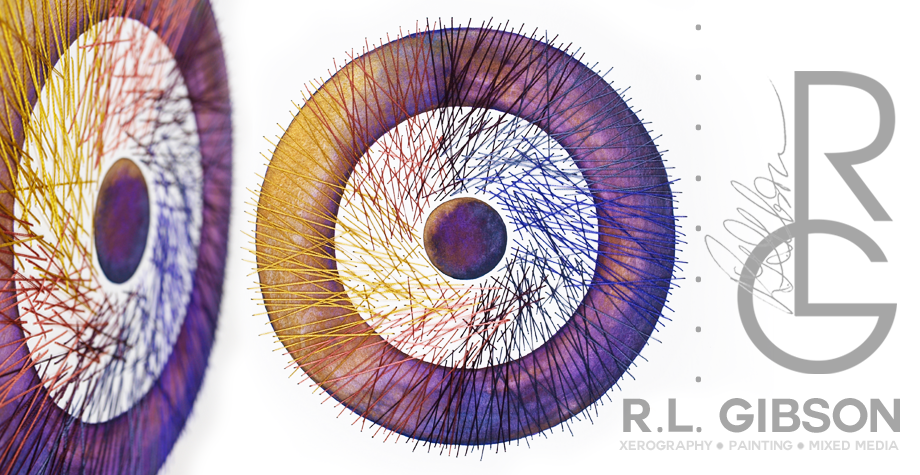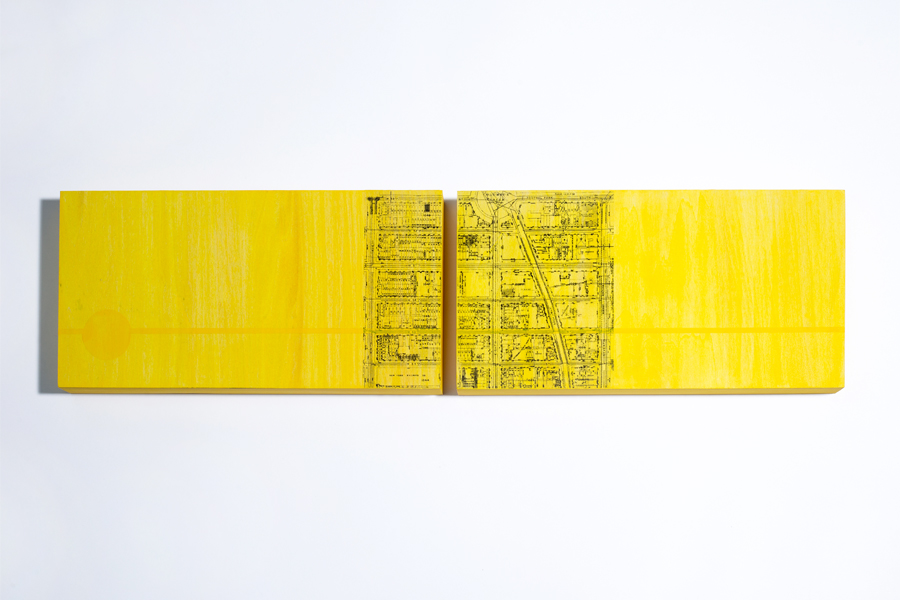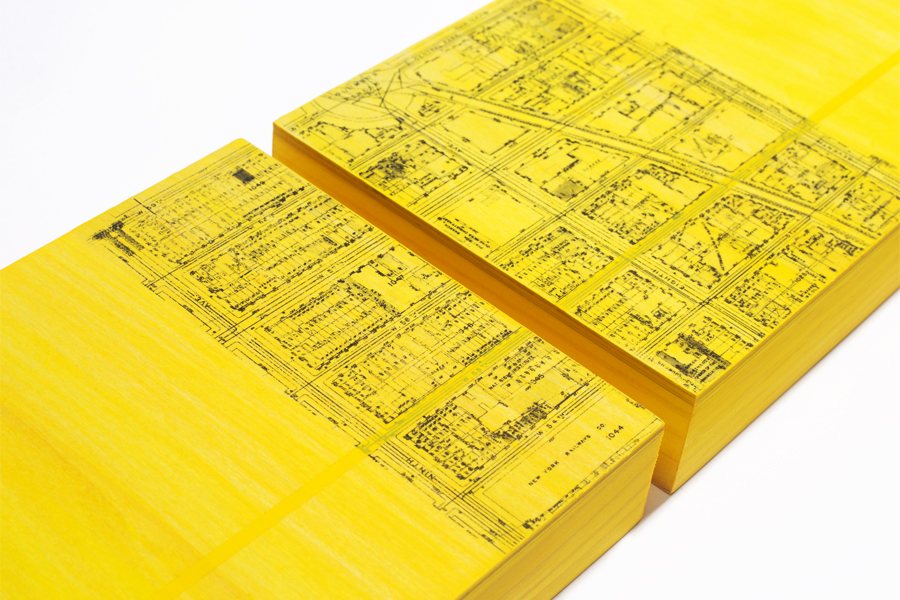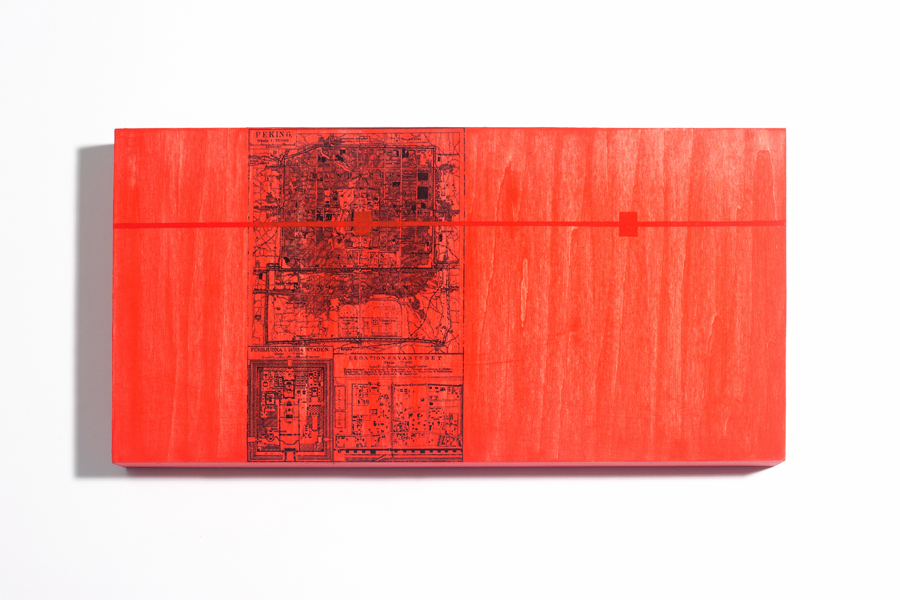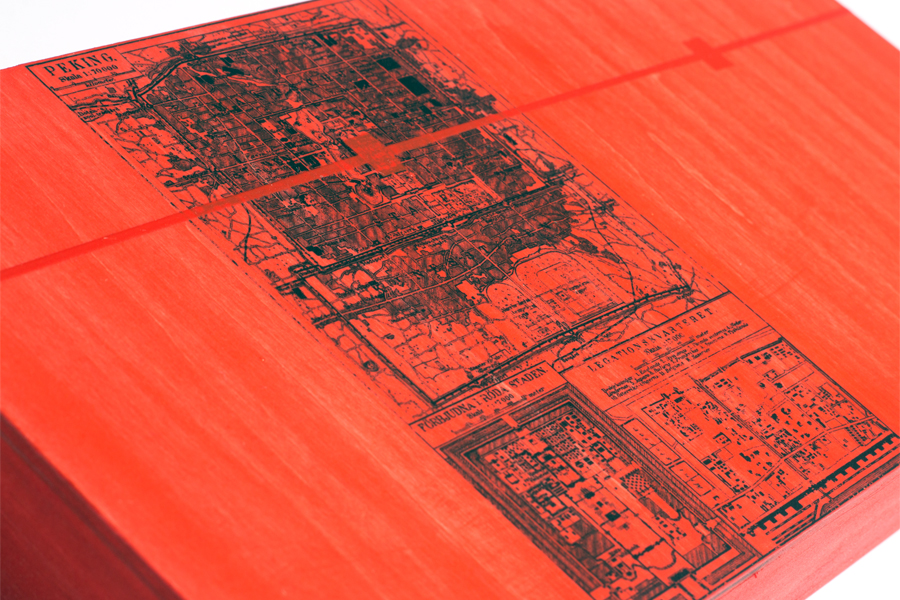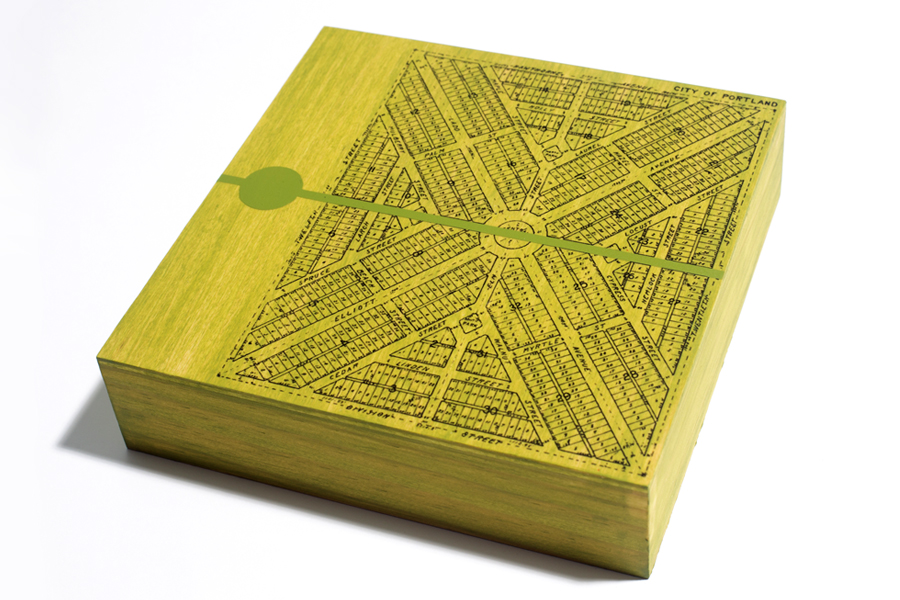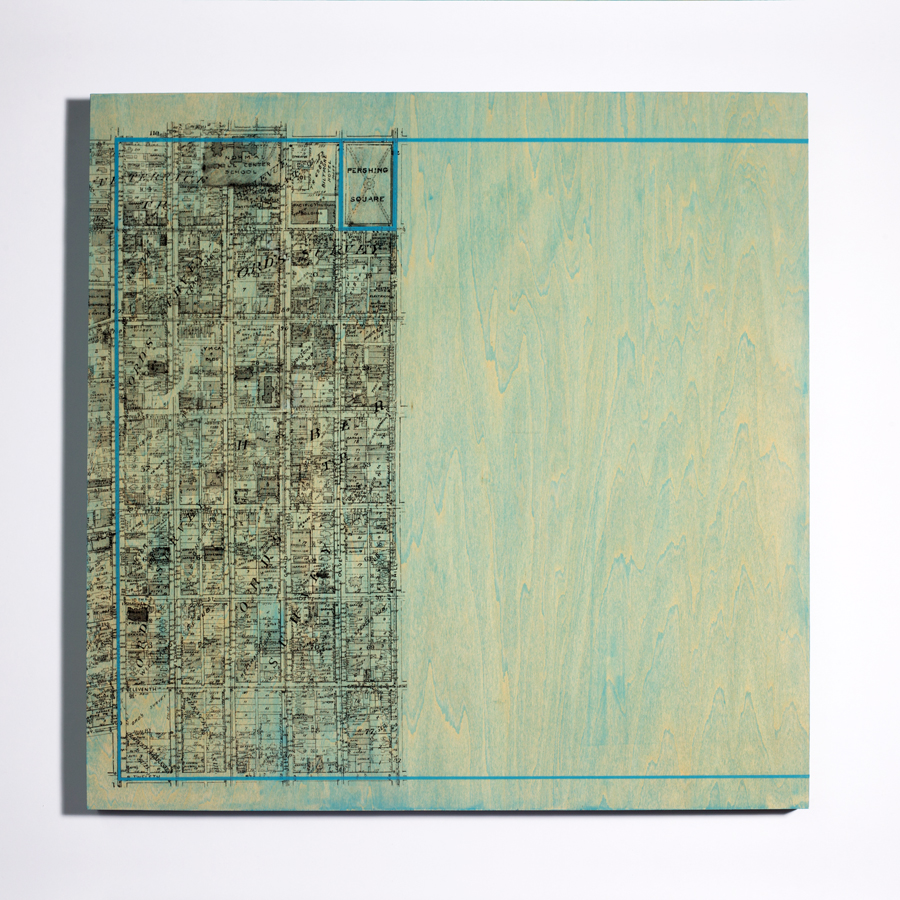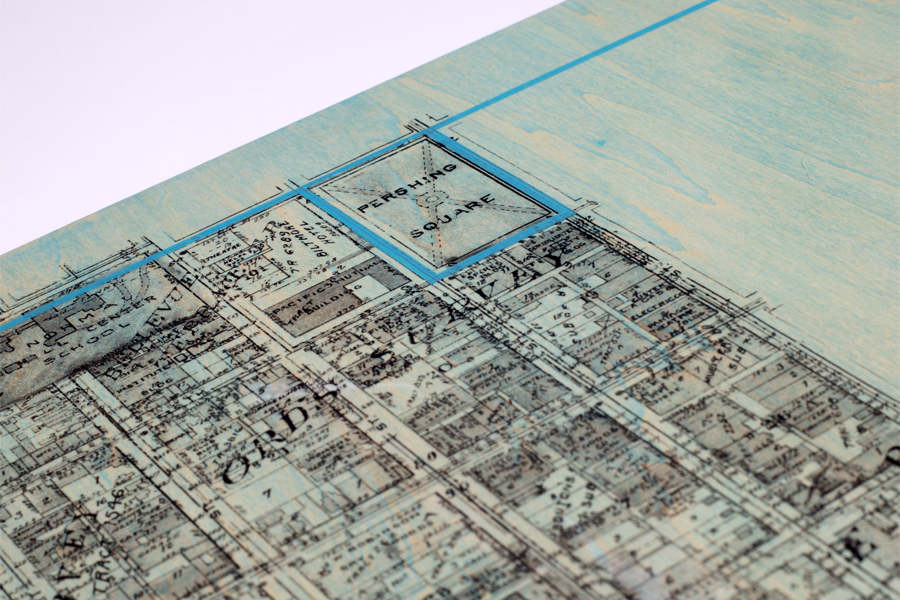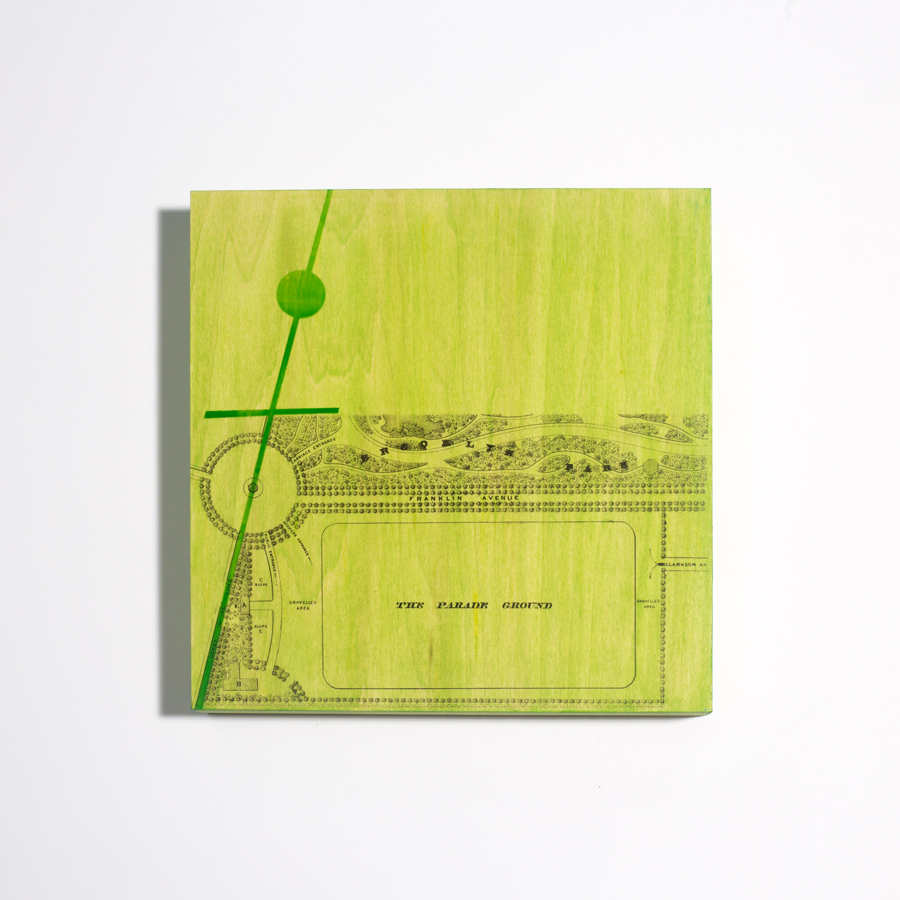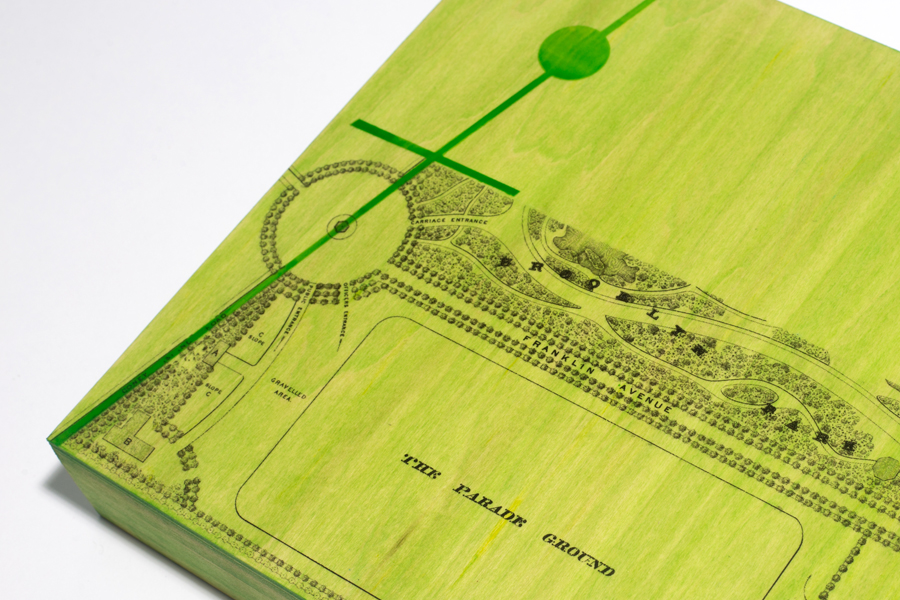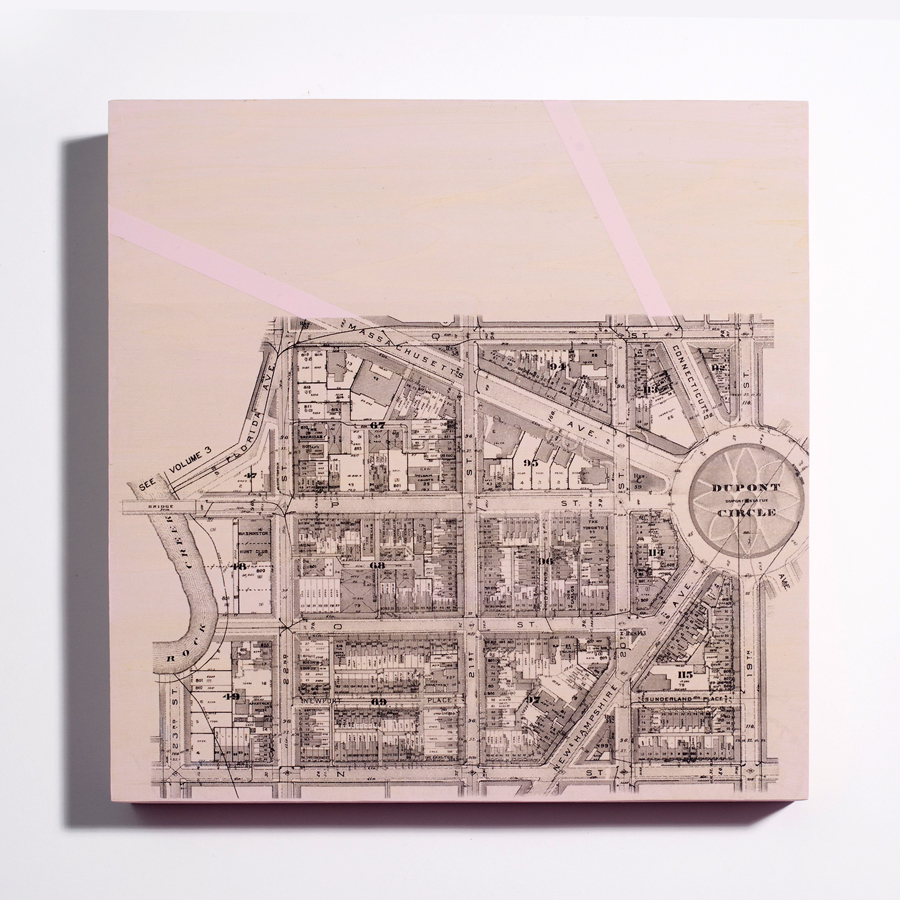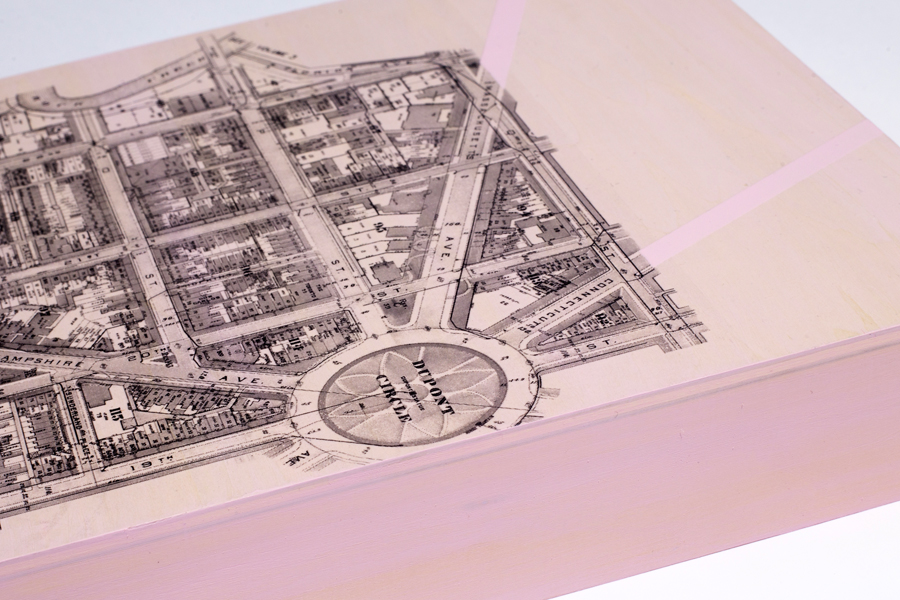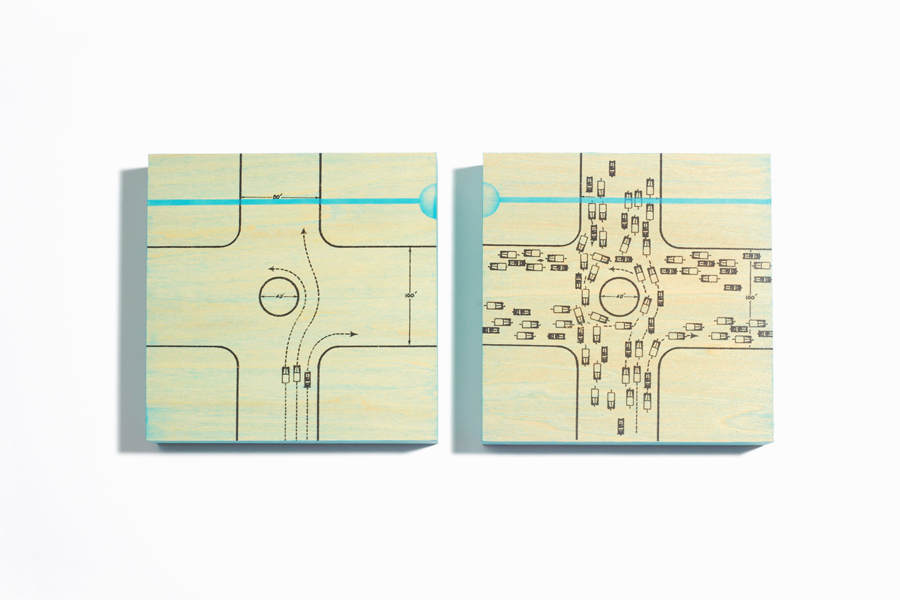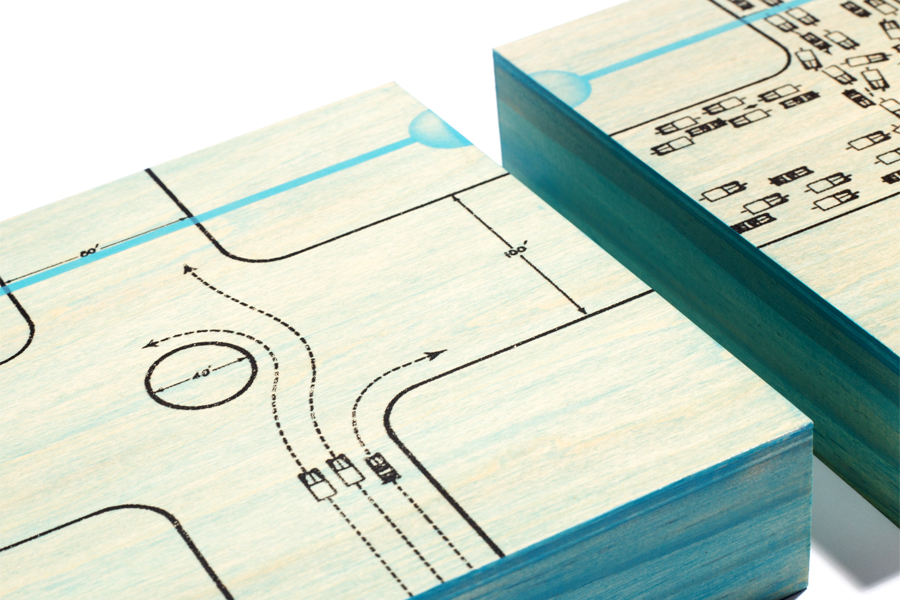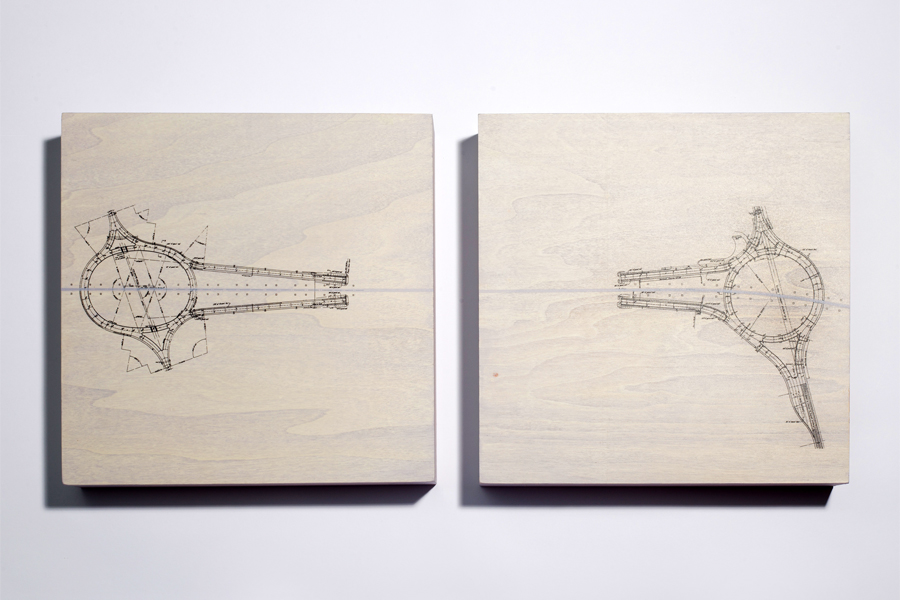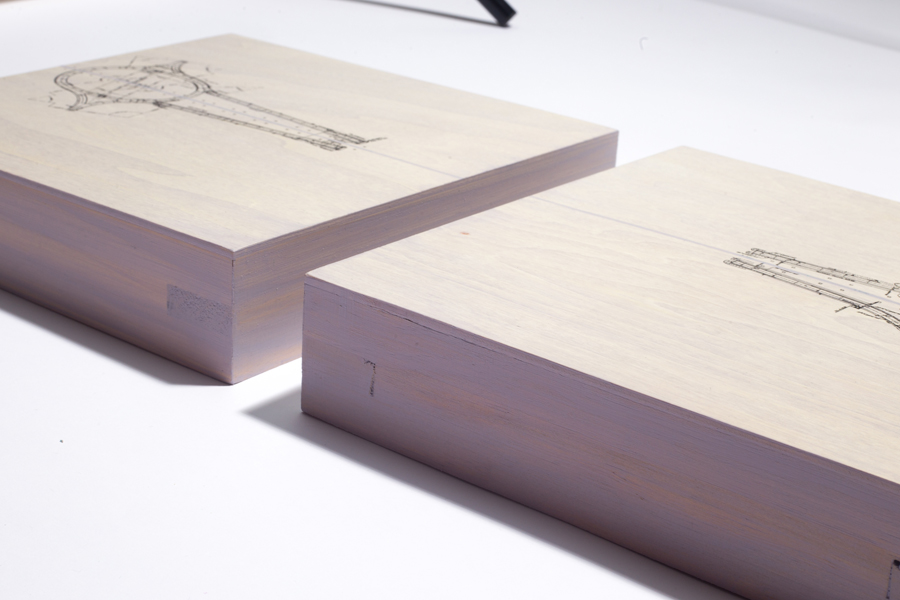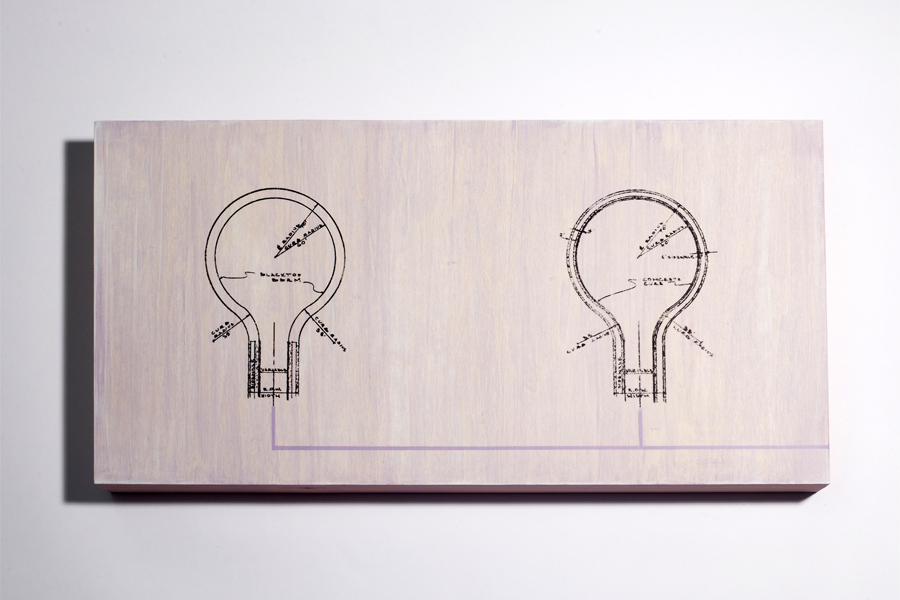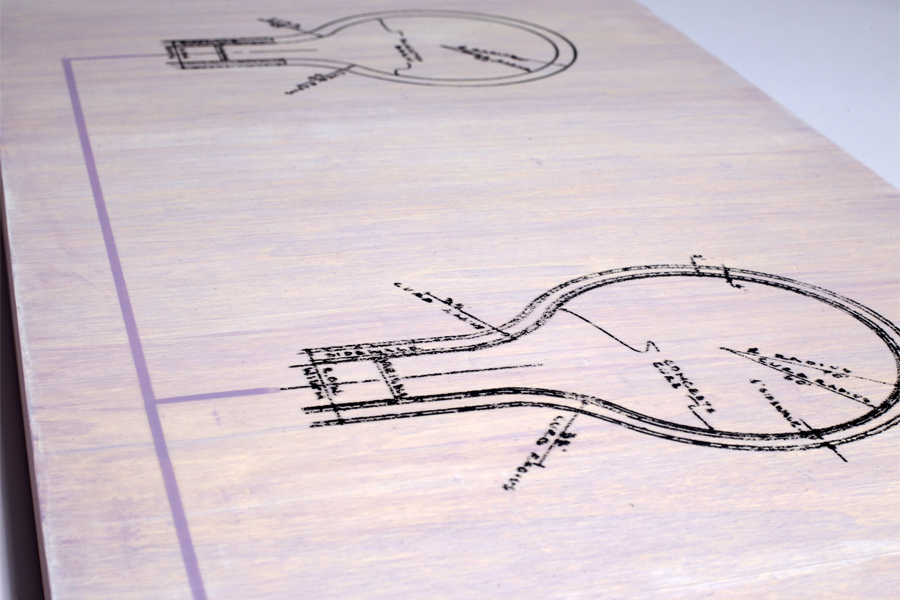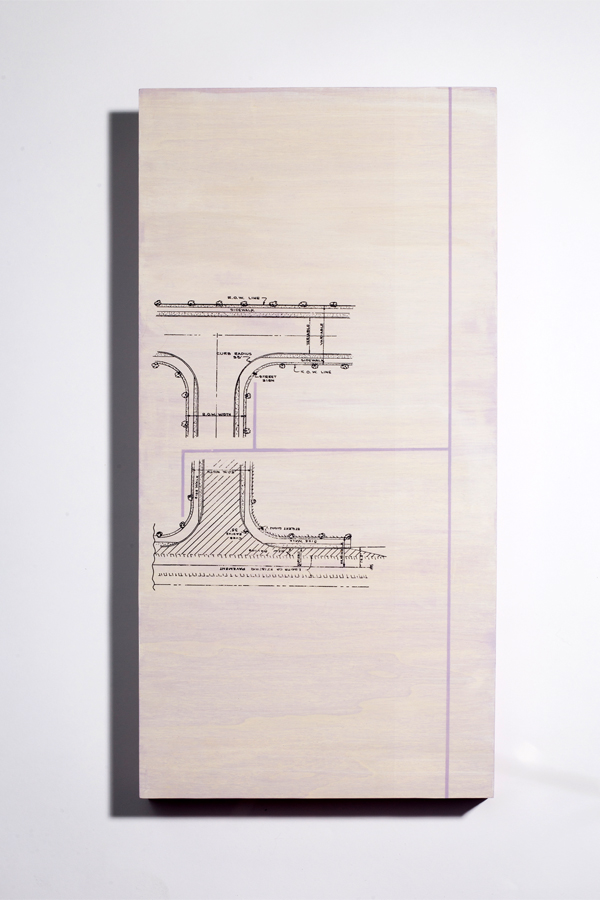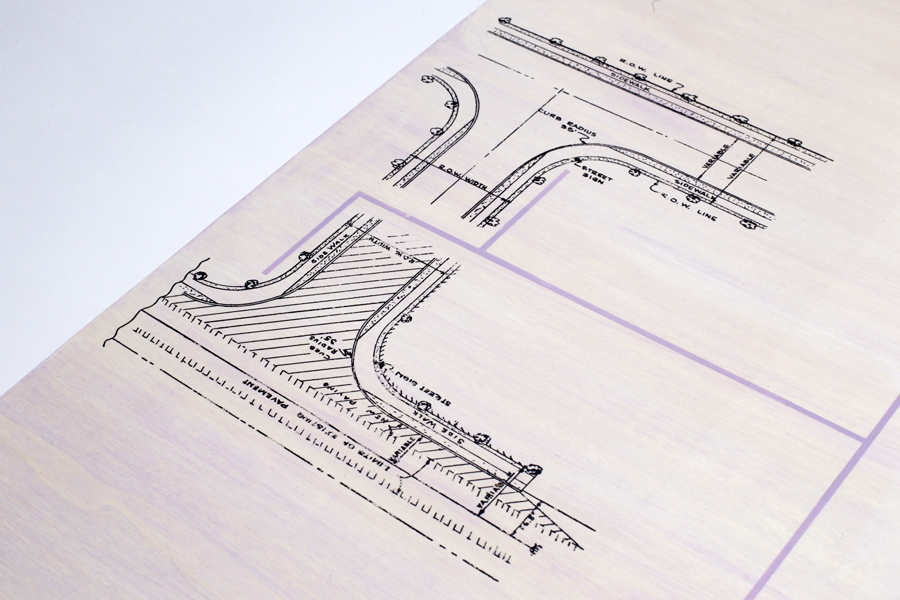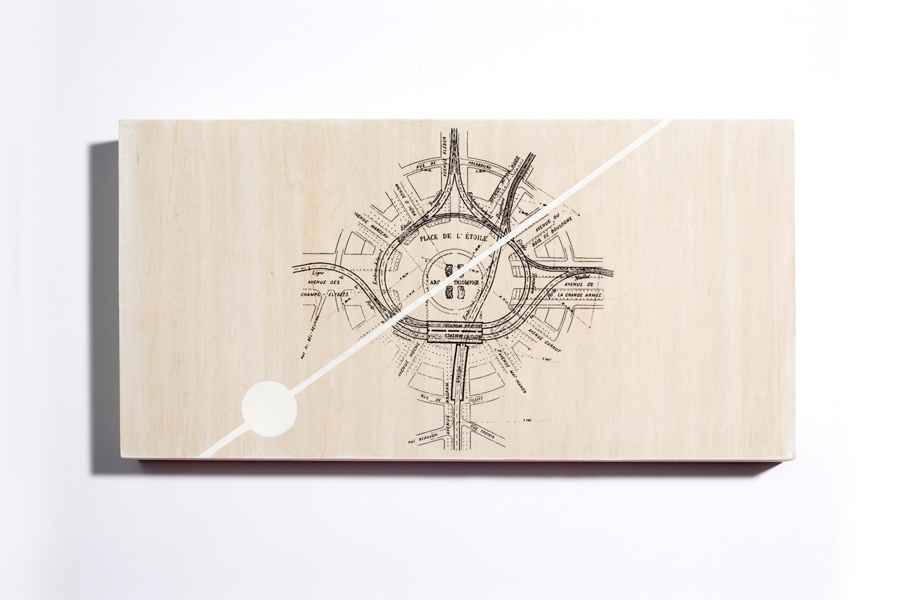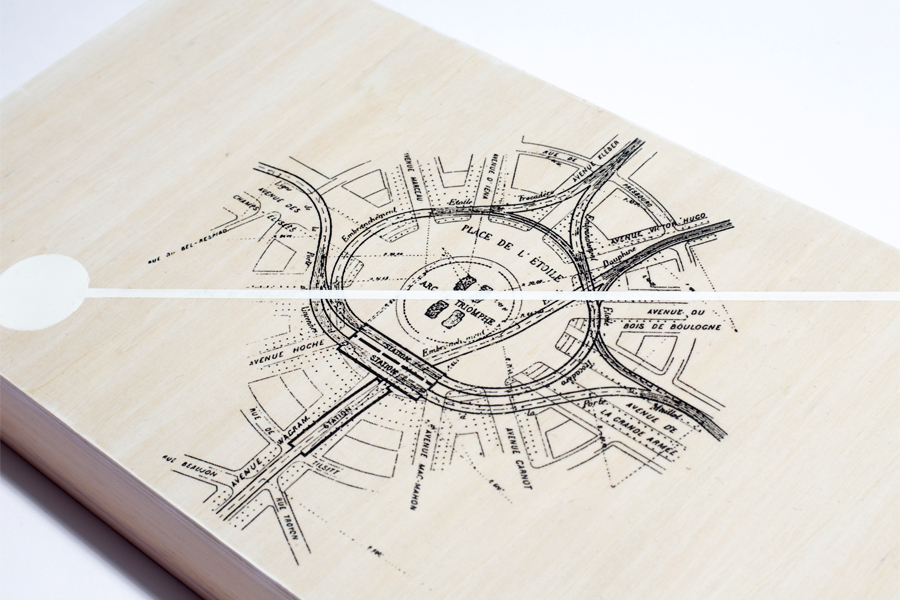TRAFFIC by Artist R.L. Gibson ©2017
__________________________
The “Traffic” series is a study of that place where cultures echo, overlap and parallel. What happens where the map ends? And are those mapped patterns enough to carry us forward? Do they hold us in place as gridlock or allow us the freedom to walk in the path of another? Do we follow the path we create or the one we find already at our feet? Are we stuck in traffic? The “Traffic” series (scroll down for images) consists of delicate xerography transfers on pigment-stained wood, including transfers of maps, surveys, blueprints and schematics of civil engineering projects that span a wide range of built environments (e.g. streets, bridges, parks & plazas). The pigment stains are chosen to connect the transfers to their literal locations while the quiet over-painting echoes the universal details of those environments that underline patterns of common human behavior.
 As a frequent traveler, I am both comforted and puzzled by the behaviors observed while traversing the traffic circle, the roundabout and the rotary. Well-intentioned drivers lean forward to afford themselves a better view of street signs, use their right turn signal despite all options being right turns, momentarily hit the brakes not quite certain of their choice before barreling ahead often without noticing the presence or location of other drivers on the circle and often just having to go around again because they missed their turn on the first go ‘round. It is sort of a perfect metaphor for navigating life. Once you make that connection, you cannot un-see it.” –R.L. Gibson
As a frequent traveler, I am both comforted and puzzled by the behaviors observed while traversing the traffic circle, the roundabout and the rotary. Well-intentioned drivers lean forward to afford themselves a better view of street signs, use their right turn signal despite all options being right turns, momentarily hit the brakes not quite certain of their choice before barreling ahead often without noticing the presence or location of other drivers on the circle and often just having to go around again because they missed their turn on the first go ‘round. It is sort of a perfect metaphor for navigating life. Once you make that connection, you cannot un-see it.” –R.L. Gibson
Traffic circles exist as a small part of a universal system of circles, squares and lines into which people choose to organize themselves on foot, in auto, plane, train and even in thought. People who cannot communicate in the same language still recognize the circle for what it universally IS. When given a choice people instinctively follow the shortest path, a straight line. Celebration and revolution commonly gain favor through crowds gathered in town squares and national plazas. Regardless of ethnicity, regardless of politics, regardless of gender, we recognize our geometry in others. Our lines intersect; our circles overlap. The maps of our cities echo self-determination. The infrastructure of our lives, literal and metaphorical, intersect. The map of our stuff, our streets, our homes, our cities, the map of our circular arguments and revolutionary squares all intersect at some theoretical eventuality. If maps are a sort of literal reductionism of intersectionality, I ask again, are we stuck in traffic?
This series is still being built and has not yet opened. Click any image below to view as a slideshow.
